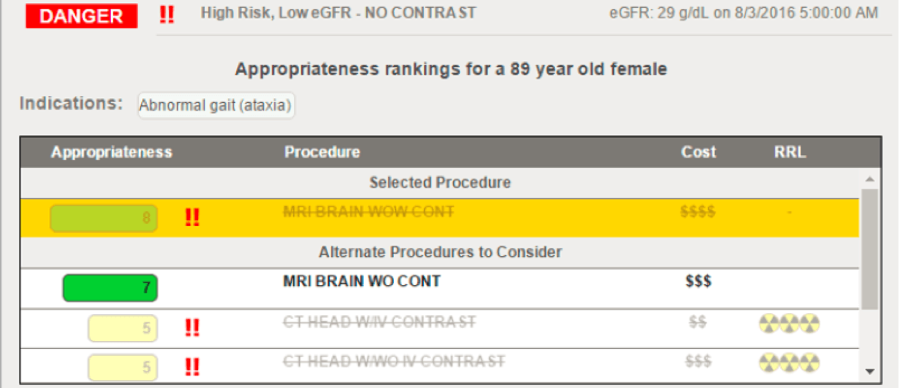In April 2014, President Obama signed the Protecting Access to Medicare Act(PAMA). A provision in the legislation mandated that physicians incorporate appropriate use criteria (AUC) for ordering advanced imaging exams, which includes magnetic resonance imaging, computed tomography, nuclear medicine and positron emission topography. While this provision was scheduled for implementation on January 1, 2017, it has since been delayed until January 1, 2018. Once implemented, sites must submit evidence of AUC consultation with their Medicare claims in order to receive payment under the Physician Fee Schedule, Hospital Outpatient Prospective Payment System and Ambulatory Surgery Center Payment System.
Clinical Decision Support (CDS) systems have been developed to meet the new AUC mandate. CDS systems are designed so that when a provider places an order for an advanced imaging exam, a support window or pop-up will display the AUC for the ordered exam as well as any other appropriate services based on the clinical history or indications given (see image below from National Decision Support). These systems are based on professionally developed evidence-based standards. A functional CDS system can be integrated within the electronic health record system to process requests in real-time with minimal additional effort, but there are also web-based systems that may be utilized as well. A ranked list of possible exams or other feedback to the ordering physician can show the recommended exams based on AUC with additional information on potential radiation exposure or cost. The ordering physician may then choose an exam from the presented list or order the exam as initially entered.

The benefits of using CDS systems include meeting the regulatory compliance requirements, benchmarking and reduced variation in use and ordering of advanced imaging exams. CDS systems are designed to have the ability to adjust the recommended studies based on local factors, but to maintain compliance with the AUC mandate, it may be necessary to maintain documentation to support any changes to the nationally accepted or evidence-based standards. CDS systems may also allow benchmark audits of the utilization of advanced imaging and the appropriateness of ordering various exams within a system. This information can be used to ensure standards of care are followed and aid in advanced imaging utilization management.
While mainly an IT/IS endeavor, the medical physicist may be impacted by the new CDS systems in a few ways. One area would be to help providers understand the standards the systems are based on. While the standards may be developed by a number of professional organizations (e.g., ACR, SNMMI), the medical physicist might be asked to provide reasoning behind dose concerns associated with certain imaging exams that may lead to exams being ranked more or less appropriately. The medical physicist may also be asked to help with development of local standards and the evidence used to support them. Finally, the CDS system may raise a number of questions by ordering physicians as it is a marked change from the traditional method of ordering advanced imaging exams. This may lead to questions or conversations that include medical physics support to help educate providers on why imaging exams are appropriate.
Back to Article List Next PreviousWe have noticed that you have an ad blocker enabled which restricts ads served on this site.
Please disable it to continue reading AAPM Newsletter